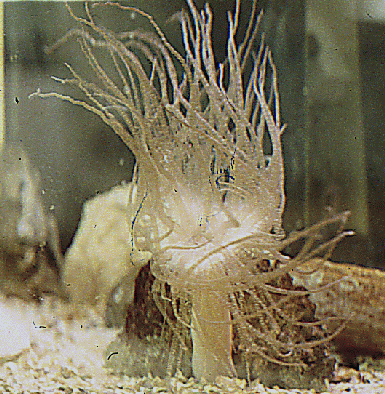Introduction to the Actinaria


Most of the soft-bodied anthozoans known as "sea anemones" are classified in the Actinaria. Actinarians have generally column-shaped bodies with the mouth at one end, and the pedal disk -- a muscular organ for attachment to substrates -- at the other. The mouth is on a corresponding structure, the oral disk, which is ringed with rows of tentacles. Actinarian anemones can reproduce either sexually or asexually, but they do not form true colonies with permanent tissue connections between members, unlike the superficially similar zoanthiniarian anemones.
Sea anemones are familiar inhabitants of rocky shores and coral reefs around the world; other species can be found at very low depths indeed. Most actinarians are sessile; that is, they live attached to rocks or other substrates and do not move, or move only very slowly by contractions of the pedal disk. A number of anemones burrow into sand, and a few can even swim short distances, by bending the column back and forth or by "flapping" their tentacles. In all, there are about 1000 species of sea anemone in the world's oceans.
Actinarians have soft bodies; some cover themselves with coatings of sand grains or mucus-like secretions, but most do not form hard parts that can be recognized as fossils. A few fossil actinarians do exist; Mackenzia, from the Middle Cambrian Burgess Shale of Canada, is the oldest fossil identified as a sea anemone.
One of the best-known peculiarities of some tropical sea anemones is their symbiotic relationship with certain species of fish, called "anemonefish" or "clownfish." The on-line Field Guide to Anemone Fishes and their Host Sea Anemones provides an excellent overview of these fish and their anemone hosts.


